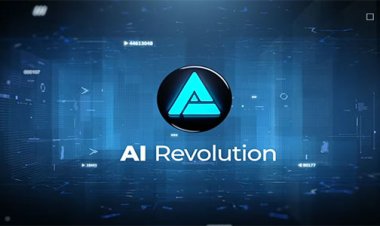How Application-Level Green Computing Is Transforming Cloud Computing?
Professionals equipped with the right knowledge from a Cloud Computing Course can effectively implement Application-Level Green Computing in real-world scenarios.

As the digital World is growing, cloud computing is becoming the backbone of the modern businesses. But this growth also includes hidden environmental cost because each of the app, service and platforms run on the cloud. This is how all of these affect the environment and researchers are now focusing to make all these eco-friendly. For this they are using the better hardware as well as renewable energy.
This is where the role of the Green Computing begins as this promotes energy efficiency from the core. This green computing focuses highly on using the little energy as possible. People with Cloud Computing Training in Noida with the right skills can implement this powerful approach in their organization if they are also looking to contribute in becoming energy efficient.
What Is Application-Level Green Computing?
Application-level green computing means designing and running software in a way that uses as little energy as possible, from development to deployment. Unlike traditional approaches that focus on optimizing servers and hardware, this method puts the responsibility in the hands of software engineers.
It is mainly based on the simple truth where the most energy efficient hardware can’t make for the code that is not written properly. Well an inefficient app will waste the energy. This won’t matter how green the server is running on. If your organization need to make the real progress in environment sector then we need a software that is e that’s designed to be efficient, not just fast or functional.
Characteristics of Green Cloud Applications
These are some characteristics of the Green Cloud Computing that defines it well. With the Cloud Computing Course in Delhi one can get the advantage of these characteristics in practice:
Energy Awareness: They track how much energy they use and help developers find where waste is happening.
Resource Optimization: They use less CPU, memory, bandwidth, and storage by avoiding unnecessary work.
Carbon Intelligence: They can delay non-urgent tasks until times when more clean energy is available.
Lifecycle Sustainability: They consider environmental impact from development all the way through retirement.
Essential Components of the application-level green computing
Let’s break down some of the essential components of application-level green computing.
1. Efficient Algorithms and Data Structures
Good software starts with smart code. For creating an app that run smooth and consume the less power one can use the faster and efficient algorithms by choosing the right data structures. For example, when any of the organization adopts faster sorting method from slower than this can help in save a huge amount of the processing time and energy.
2. Green Software Architecture
How software is structured also matters. Architectures like microservices and serverless computing let apps use resources only when needed. Event-driven systems avoid waste by running code only in response to specific actions, instead of running all the time.
3. Smart Caching
Caching can reduce how often data needs to be fetched or calculated. From browser caching to backend caching, these strategies cut down on repeated work. But green apps don’t just cache everything they manage it carefully to avoid wasting memory or energy maintaining unused data.
4. Database and Storage Efficiency
Databases can be energy hogs. Green apps write efficient queries, avoid unnecessary joins, and archive old data instead of keeping everything live. Using compression and removing duplicate data also helps reduce storage needs — and energy use.
5. Batch and Asynchronous Processing
Not every task needs to happen immediately. Green apps delay non-urgent work like report generation or data syncing and run these during off-peak hours when cleaner energy is more available. This reduces peak loads and makes better use of renewable energy.
6. Network and API Optimization
Every API call and network request consumes energy. Efficient apps bundle requests, use lightweight formats like Protocol Buffers, and avoid over-fetching data. They also compress data to reduce the load on networks and servers.
7. Code-Level Optimization
Small coding choices can have a big impact. Compiled languages like Go or Rust often use less energy than interpreted ones. But even within a language, writing cleaner, more efficient code — avoiding unnecessary loops, cutting dead code, using lazy evaluation — can greatly reduce energy use.
8. Monitoring and Metrics
To manage energy use, you have to measure it. Green apps track CPU usage, memory allocation, network traffic, and disk operations. For this you should have gained Cloud Computing Certification Course which can help you fulfill the responsibilities of this role. Dashboards help teams see the real-time environmental effect of their apps and spot areas to improve.
9. Sustainable Development Practices
The way we develop software also matters. Continuous integration tools should avoid running unnecessary tests. Development environments should be lightweight. Even the build and deployment process should be optimized for speed and energy efficiency.
10. Frontend and User Interface Design
Energy use doesn’t stop at the server. Frontend design affects how much power is used on user devices too. Efficient image handling, reduced JavaScript, smart animations, and even offering dark mode (which saves power on OLED screens) all contribute to a greener experience.
Professionals equipped with the right knowledge from a Cloud Computing Course can effectively implement Application-Level Green Computing in real-world scenarios. This approach helps organizations minimize energy consumption and operational costs by enhancing software efficiency and optimizing resource utilization.
Conclusion:
In the world of the green cloud, making the apps more energy-efficient is a major step forward. As more of the companies are begin to care about the environment and help the software developers to build the programs that use less energy. Bodying so, the tech world can reduce the pollution and still create the smart tools.


 laxmikantmishra
laxmikantmishra 



















